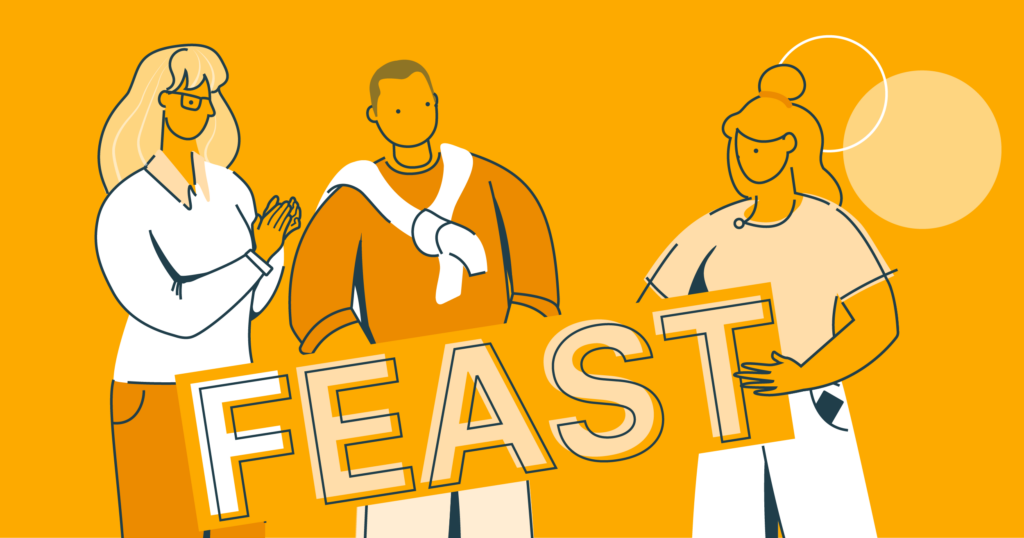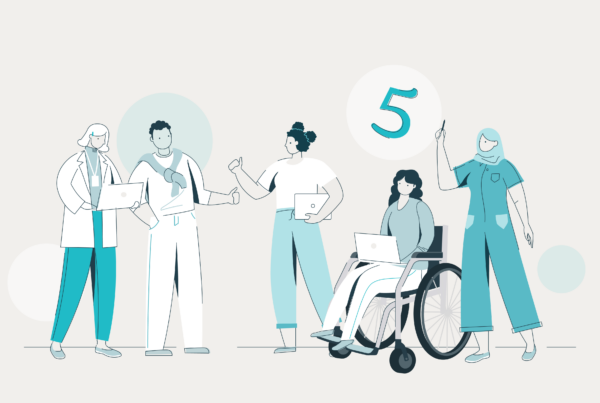We’ve been told a lot over the last few years about how we’re living through unprecedented times.
And it’s true. Heebie-jeebie-inducing, for sure, but true.
It’s true when it comes to work, too. In many of our organisations, we’ll have four or five generations rubbing alongside one another. It’s a bit of a juggling act. So, when it comes to L&D, you’ll want to roll out products that keep them all excited, engaged and eager for more.
But how?
How do you keep a teenager as saucer-eyed with wonder by your learning programme as a septuagenarian?
Here are three surefire ways, backed by science.
 Allow for autonomy
Allow for autonomy
Autonomy is the capacity to direct our own lives. For multi-New York Times bestselling author Dan Pink, it sits alongside mastery and purpose as one of the three key drivers of human motivation. Autonomy also relates directly to dignity. And it’s a key feature of Deci and Ryan’s self-determination theory (1985; 2000) who emphasise its importance in development and well being.
Autonomy, then, is clearly a big deal. You don’t want to mess with it.
Writer, consultant and one of the UK’s most illuminating voices on the intersection between work and life, Bruce Daisley, knows all about it. In his recent, head-turning book Fortitude: Unlocking the Secrets of Inner Strength, he cites that 90% of employees who felt they had a say at work felt a sense of loyalty towards their organisation (versus a meagre-looking 35% who, if denied a say, felt loyal).
In the same pages, Daisley reports the phenomenon of ‘revenge bedtime procrastination’. Workers who have little autonomy in their day-to-day work lives, he says, felt they could exercise some sense of freedom by staying up late. A subtle form of rebellion that likely leads to poorer performance.
Don’t want learners to rebel? Want them to be at their peak? One way, then, is to include elements of self-directed, autonomous learning. Give learners at least some ability to choose when, how and what modules they want to do.
Rob them of this – whether they’re 17 or 70 – and you’re likely to have a Fletcher Christian-shaped problem on your hands.
 Bring up the benefits
Bring up the benefits
There are benefits galore when it comes to learning. Both for individuals and the wider organisation-osphere. To get people on board, across the board, you’ll want to highlight these benefits.
Learning is great for cognition and overall brain health for all generations. Indeed, one study reported that adults aged 58-86 who took five new classes over a three-month period saw their cognitive abilities increase to match those 30 years younger. An oft-cited study from University College London demonstrates that taxi-drivers-in-waiting taking The Knowledge (typically involving absorbing huge amounts of new information) saw their brains actually grow.
Learning also provokes our cranial reward centres. Let’s get technical for a second. Subcortical reward-related areas, especially the ventral striatum, are activated by a wide range of rewarding stimuli. Such stimuli include cash, food and sex but also include learning new things, such as learning a new language. So, it’s not a bad idea to point out that learning can feel just as good as becoming (if we’re being delicate) intimate with someone or eating a Twirl.
But it’s not just individuals that learning benefits. Training and learning programmes improve performance company wide. They increase productivity and engagement. They attract and retain blockbuster talent, plug skill gaps, and create a more harmonious environment. (We could – and, as cheerleaders for learning, we get that we sometimes do – go on.)

 Curate content that learners can FEAST on.
Curate content that learners can FEAST on.
The UK’s Behavioural Insights Team coined the EAST framework as a way of improving policy using the behavioural, social and brain sciences. If you want someone to do something – including learning new things – you’d do well to make it:
Easy One of our go-to neuroscientists, Professor Lisa Feldman Barrett, says that your brain’s constantly running a budget for your body. It wants to conserve energy. So, make learning easy. And look to remove hurdles that swallow up unnecessary energy.
Attractive Make sure your learning products are aesthetically attention-grabbing, personal and come laden with attractive incentives.
Social We are social animals. Keep learners engaged with gamification, leaderboards and spaces where they can learn together. Consider, too, your team making a group pledge, so they’re making a harmonious, as-one commitment.
Timely When are your L&D-ers most likely to respond to learning? Leap on it. Perhaps forget the height of summer or the weeks before Christmas. Instead, consider temporal landmarks when introducing a new programme.
But there’s something missing. As we (and, indeed, behavioural science colossus Cass Sunstein) have said elsewhere, there needs to be a fifth element. Fun.
Fun could include introducing funny elements. (Humour is not only enjoyable, but gives us extra energy to learn.) Fun could be adding moments of surprise (it’s been shown that moderate, short-term stress boosts alertness and performance). Fun could be peppering your learning with captivating narratives.
Make learning FEASTable and your teams, of all ages, will be hungry for more.
Before we clear off, a note. Try to go easy on presumptions about which generation prefers what. As some (academic) quarters have said, we should be cautious when making assumptions about generational differences – indeed, there are commentators working in the organisational sciences who have pointed out that science shows that generations are not even a thing. Learning preferences are as likely to be linked to, say, introversion or extraversion than whether you’re a Baby Boomer, Gen X or Millennial.
One way to cover all the bases is to offer some top-notch blended learning programmes. Such programmes can make use of all the principles covered above – which will appeal to ANY generation (as long as they’re humans). And they satisfy both those who like to reflect on their own and those who crave some live in-person interaction. Blended learning has been shown to bring about a significant increase in learning engagement and have the advantage of offering each group a little bit of what they fancy.
And if you do fancy that, we can probably help.




